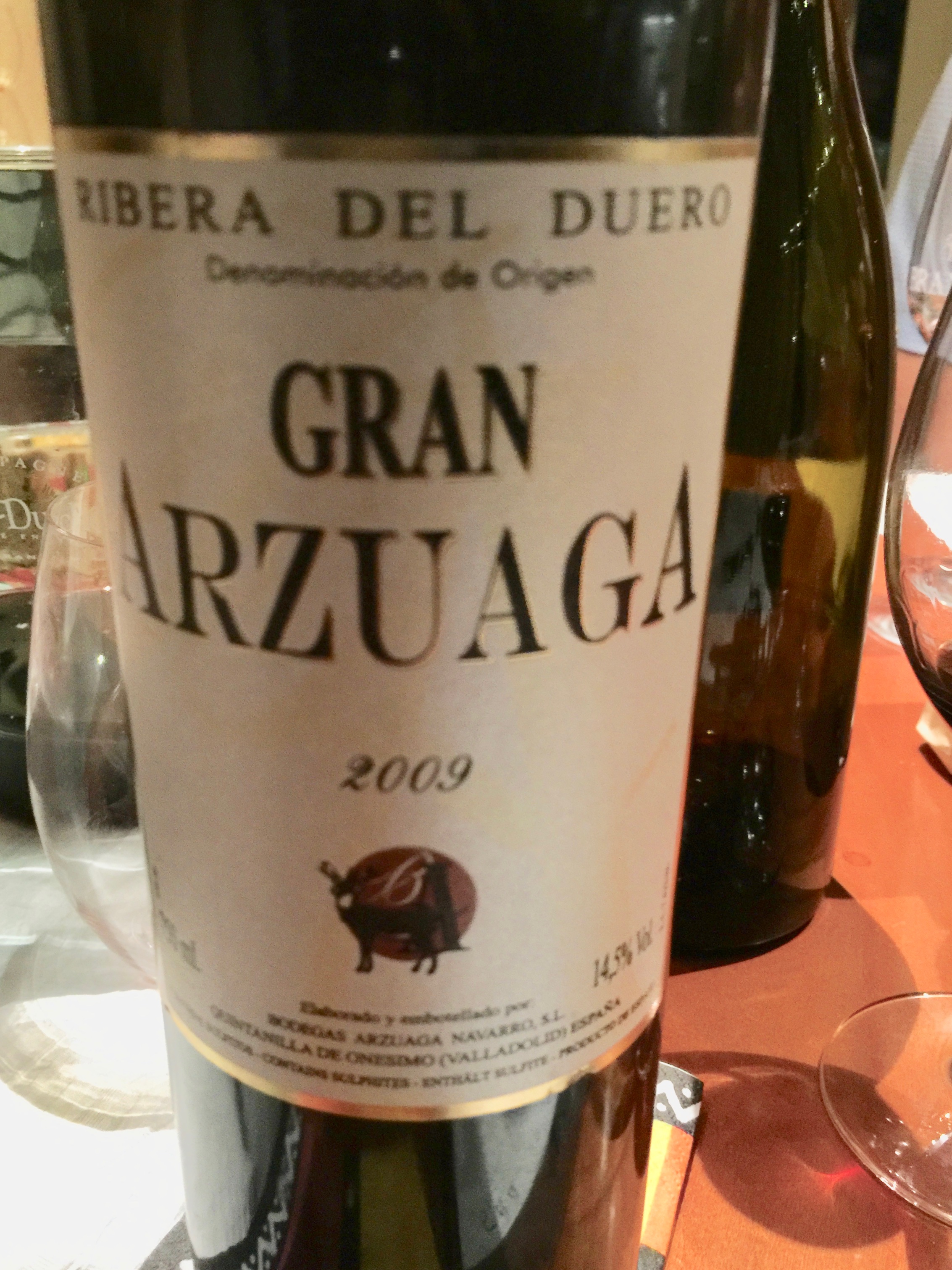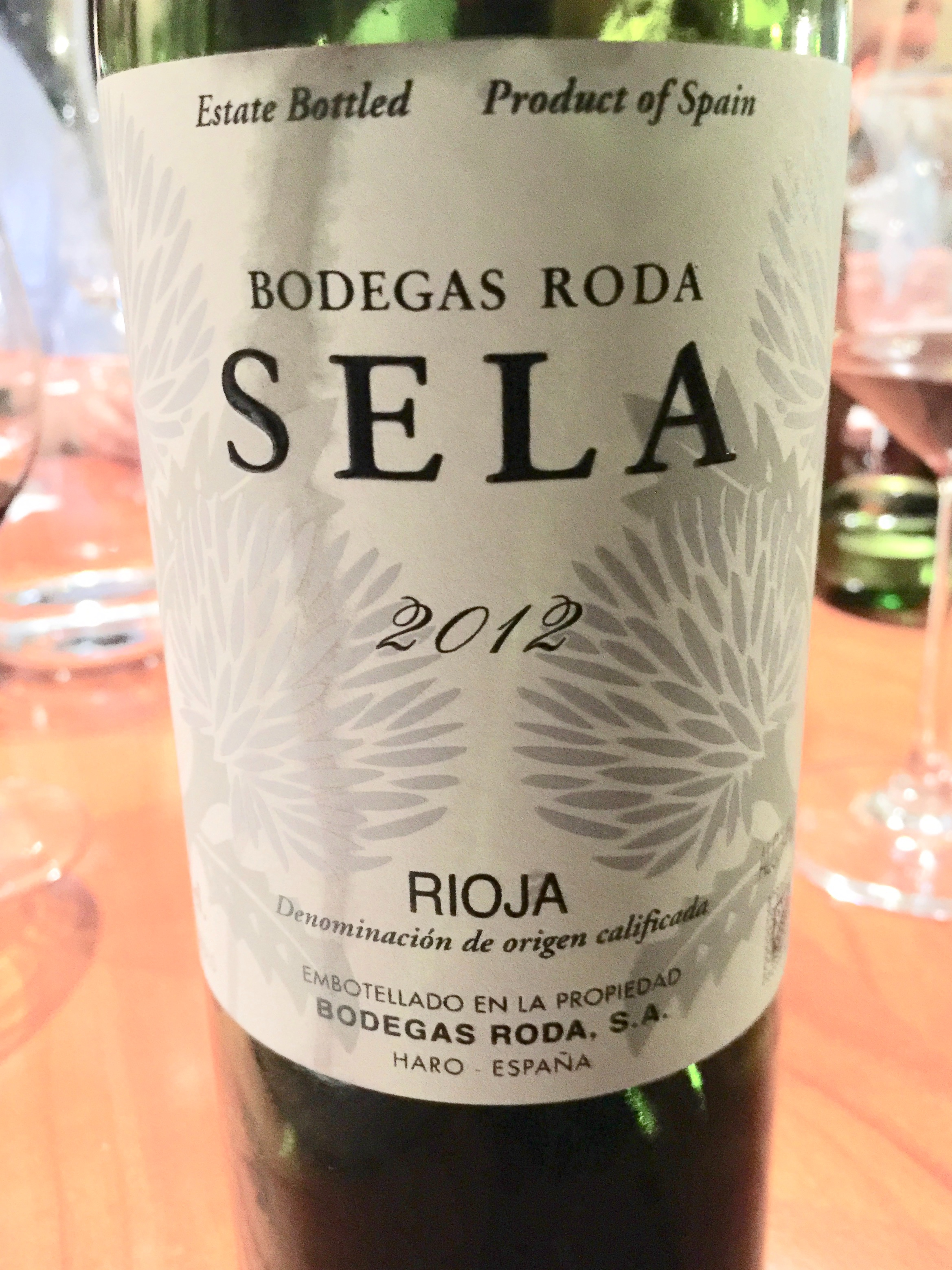Our blind wine tasting group met in one of our member`s home to enjoy Tempranillo from Spain along with well selected and prepared Spanish themed appetizers and homemade paella.
Our host provided 2 starter wines, one a tangy, yeasty and honeyed 2013 Muga Cava Conde de Haro Rioja and the other a 2014 CUNE Monopole Classico Blanco Seco Rioja, a spicy, rich and smooth textured wine aged in used Sherry wine barrels with a little Manzanilla Sherry added.
The first flight included 5 wines which we tasted, noted and scored blind before revealing:
2000 BRANDER SANTA YNEZ VALLEY TEMPRANILLO- obviously a ringer from Fred in attendance, this was from 1 of only 2 vintages, the other being 2001, that he made a Tempranillo which was sourced from a local Santa Barbara County vineyard; pleasant enough, it gave wild cherry notes all the way through with a bit of tartness past mid palate; it finished dry which Fred commented later on was due to its very high pH.

2001 FAUSTINO GRAN RESERVA RIOJA- 85% Tempranillo, 10% Graciano, 5% Mazuelo; as with all in this flight, the color was a dark ruby red; the nose had lots of grapey notes announcing an immense amount of fruit forthcoming on the palate; black cherry was most prevalent here and in the taste which also included accents of leather and tobacco; by mid palate, the fruit had a tart character and at the end, the finish was super dry, but still with loads of fruit.

2005 AALTO RIBERA del DUERO- 100% Tinta del País or Pinot Fino {as Tempranillo is called in RdD} is sourced from old vines with an average oak ageing of 23 months, 50% new French barrels and 50% 1 or 2 years old French and American barrels; the nose was a bit muted with a touch of talc, but the taste exploded on the palate with generous amounts of chocolate and coffee accented blackberry and cherry notes; it was full bodied, smooth and easy on the palate and long; my #1 in the flight.
Ribera del Duero has aging requirements similar to those in Rioja: “Crianza” wines must age at least two years with 12 months in oak; “Reserva” wines must age at least three years with 12 months in oak; “Gran Reserva” wines must spend five years aging with two in oak.
2004 LOPEZ de HEREDIA VINA TONDONIA RESERVA RIOJA- 75% Tempranillo, 15% Garnacha, 10% Graciano and Mazuelo; the aromatics is suggestive of young and highly energetic fruit plus a strong hit of clove; the taste has an unexpected profile that included saline, jujube, red cherry and red raspberry; it had soft, refined tannins which gave rise to a pleasant mouthfeel.

1994 ALEJANDRO FERNANDEZ TINTO PESQUERA RESERVA ESPECIAL RIBERA del DUERO- not much of a nose, but a lot in the taste including leather, earth, dark fruit and an unmistakable hit of Brett of the 4-ethylphenol type giving horse stable and barnyard notes.
The 2nd blind flight of 4:
2009 ARZUAGA NAVARRO GRAN ARZUAGA RIBERA del DUERO- a blend based on Cabernet Sauvignon, Albillo and Tinto Fino; the nose was loaded with dark fruit laced with vanilla and oak spice; the taste was very pleasing with spicy red cherry most prominent; it was full bodied, had layers of complexity and held on for a grand finish which had a bit of heat in it. The group and I had it #1 in the flight.
Albillo is a white wine grape variety grown in northwestern Spain, notably in Galicia. It also grows further to the south and inland towards Madrid, and eastwards in Ribera del Duero where it may also be called Pardina. Although it is, at best, only lightly aromatic, Albillo produces wines with tropical notes and a rich mouthfeel.
2010 MARQUES de RISCAL RESERVA RIOJA- 90% Tempranillo with some Mazuelo and Graciano; minerals and chocolate came in first followed by wondrous blackberry fruit with a hit of mint past mid palate; mild oak notes are evidenced throughout and the velvety texture adds to the pleasantness of the experience.
2010 S ARROYO SENORIO de SOTILLO RESERVA RIBERA del DUERO- lots of American oak here with a nose dominated by coconut and the taste profile having an immense amount of pine wood along with fruit forward notes of blueberry, cranberry and black cherry; it finished with some heat; the group liked it, me?, not so much.
2011 SIERRA CANTABRIA UNICA RESERVA RIOJA- 24 months in used French barrels; 98% Tempranillo and 2% Graciano; lots of fruit here with blueberry, cranberry and blackberry most evident; some talc, sandalwood and milk chocolate provided nice accents; it had a good mouthfeel and held on for a satisfying finish.
The 3rd blind flight of 4:
2012 CONDADO de HAZA RIBERA del DUERO- young, dark, vibrant ruby color as with all others in this flight; chocolate blackberry on the nose with black cherry arriving on the palate along with a note of mint; it`s smooth and easy and finished on a high; consensus #1 in the flight, my #2.
It was brought by one who hosts a Wine Spectator Top 100 tasting every year, this was #18 in the WS Top 100 of 2016 as noted on this duplicate bottle he had leftover.
2012 RODA SELA RIOJA- 96%Tempranillo, 3% Graciana, 1% Garnacha; as if in competition with the above wine, this had just a bit more chocolate covered blackberry plus some vanilla, plum and red cherry without the minty note and an even more softer and smoother texture; it was definitely more complex with layered depth and held on for a long, impressive finish; my #1 in the flight.
Bodegas RODA was conceived and initiated in the late 1980’s by the Rollant-Daurella (Ro-Da) family of Barcelona, minutely involved in Spain’s fine wine distribution sector. Their goal was to produce a red wine second to none in the world. Although certainly really good, this is not the best wine I`ve ever had.
2012 ABADIA RETUERTA SARDON del DUERO SELECCION ESPECIAL- another Wine Spectator Top 100 of 2016, this being #12; 75% Tempranillo, 15% Cabernet Sauvignon, 10% Syrah from the 54 separate plots that they have identified in their 180 hectares of vineyards; matured in 60% French and 40% American oak barrels for 14 months; the nose was huge and suggestive of a big, bad dude forthcoming; true to the nose, it was all that and more with generous amounts of licorice and chocolate laced wild blackberry, black cherry and cranberry; it needs some time to simmer down, integrate and balanced out.
2010 GRUPO OLARRA CERRO ANON RESERVA RIOJA- oak dominated this from the nose through the tail with talc and sandalwood first up then loads of leather infused black currant, plum and blackberry coming in; it was pretty wild and wooly and probably good that it was our last wine of the night as it kind of fried my palate and demanded some immediate food intake and a glass of water.
Cheers,
Blake




